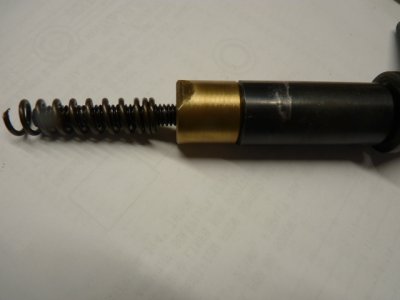DPittman
Ultra Member
The quill lock on my milling machine is made of aluminum and operates in a similar way like most other quill locks I've seen. It's always been a grabby/binding thing and I believe the aluminum lock is the main reason why. I may replace it with homemade brass one. I am wondering about the groove/flat spots in the quill itself. How can aluminum wear down steel like this unless it had considerable grit embedded in it? I suspect the previous owner cranked down the quill while locked more than once and I believe I did it partially once myself.


